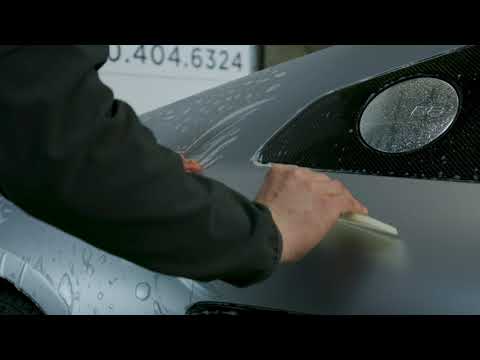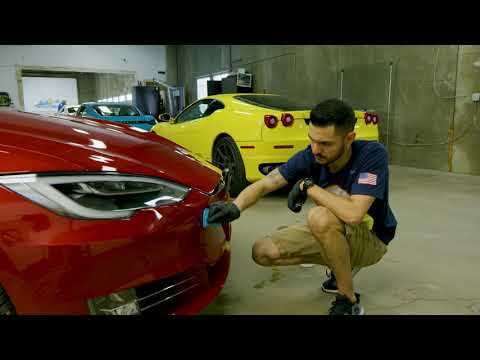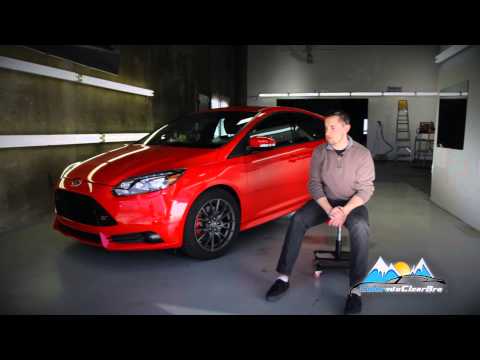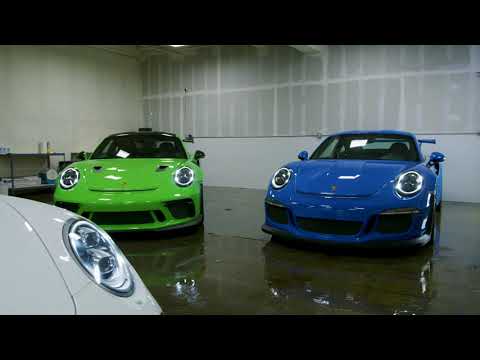What is Dyed Window Tint? Dyed window tint for cars is a type of window film applied to a vehicle's windows to enhance its appearance and provide various benefits.
This type of tint is created by layering dye between adhesive and protective layers, resulting in a darkened appearance.
Dyed window tint is a popular choice in window tinting among car owners due to its:
- affordable option
- heat reduction
- resistance to glare
- UV Protection
- provide privacy
This article will explore the features and advantages of dyed window tint, its installation process, and window tinting maintenance tips.

- What are Some Benefits of Dyed Window Tint?
- Are There Any Disadvantages to Auto Window Tints?
- Types of Window Tinting
- Dyed Films
- Matte Finish vs. Shiny Appearance
- How Does Dyed Window Tint Work?
- Check State Window Tinting Laws
- Considering Dyed Window Tint?
What are Some Benefits of Dyed Window Tint?
Dyed window tinting for cars offers several benefits, making it a popular choice among car owners. The biggest benefit of dyed tints is their ability to provide privacy and reduce glare. This is achieved by the dyed tint film, designed to darken the windows and block out excessive sunlight.
One statistic highlighting the effectiveness of dyed window tint is that it can block up to 99% of harmful UV rays. This is crucial for protecting both the passengers and the vehicle's interior from the damaging effects of the sun's rays.
In addition to UV protection, dyed window tint offers a couple of other benefits.
Firstly, it helps regulate the vehicle's temperature by reducing solar heat gain. The car's interior stays cooler, especially during the hot summer months. This can improve passengers' comfort and reduce the need for excessive air conditioning, thus saving fuel.
Another benefit is that dyed window tinting for cars can provide an extra layer of security by making it difficult for outsiders to see into the vehicle. This helps to deter potential thieves and protect valuable belongings that may be left inside the car.
Overall, dyed window tinting for cars offers privacy, glare reduction, UV protection, heat rejection, and security. These benefits make it a popular choice for vehicle owners looking to enhance their driving experience and protect their investment.
Are There Any Disadvantages to Auto Window Tints?
Yes, there are some disadvantages to auto window tints.
- Reduced visibility: Window tints can reduce the driver's and passengers' clarity and visibility, especially during nighttime or in low light conditions. This can increase the risk of accidents or make it difficult to see road signs and other vehicles.
- Legal restrictions: Different regions have different laws and regulations regarding the darkness and types of window tints allowed on vehicles. If the tint on your car windows does not comply with the local regulations, you may face fines or penalties.
- Interference with electronic devices: Some window tints contain metal particles that can interfere with the signals of electronic devices such as GPS, mobile phones, or radio systems. This interference can result in decreased functionality or poor reception.
- Heat retention: While window tints are meant to reduce heat from entering the vehicle, they can also retain heat inside the car. This can be uncomfortable, especially during hot weather or in areas with high temperatures.
- Difficulty in cleaning: Window tints can make it challenging to clean the windows correctly. The tint film may require unique cleaning products or techniques to avoid damaging it, which can be time-consuming and inconvenient.
- Decreased resale value: Some potential buyers may hesitate to purchase a vehicle with window tints as they may have personal preferences or concerns about the legality and visibility issues mentioned earlier. This could affect the resale value of the car.
It's essential to consider these disadvantages and weigh them against the benefits of auto window tints before deciding.
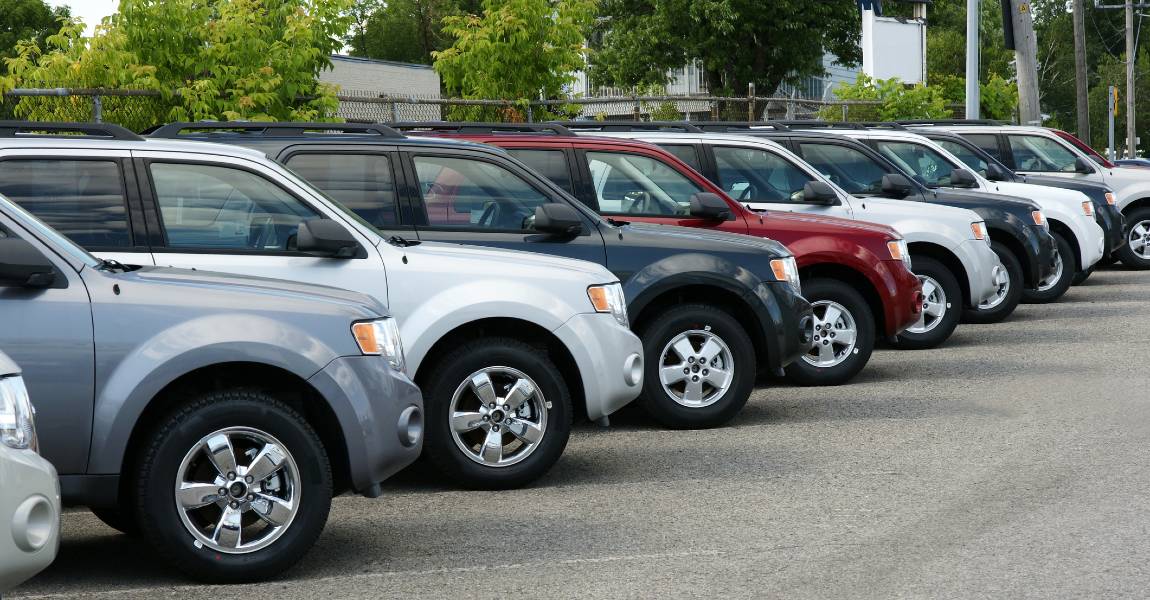
Types of Window Tinting
Several types of window tint are available for automobiles, each with unique characteristics and benefits.
- Hybrid tint combines multiple materials to balance heat rejection, glare reduction, and UV protection.
- Carbon tint offers a dark appearance and excellent heat rejection without interfering with electronic signals.
- Metalized tint contains tiny metallic particles that reflect heat and provide superior UV protection, but it can interfere with electronic signals.
- Ceramic tint offers excellent heat rejection, UV protection, and clarity without interfering with electronic signals.
- Crystalline tint is a high-end option that provides maximum heat rejection and UV protection while maintaining a clear appearance.
These different types of tints vary in terms of darker appearance, quality of window tint, and price, allowing car owners to choose the cost-efficient option that best suits their needs and preferences.
Dyed Films
- Hybrid Films
- Ceramic Films
- Carbon Window Tinting Film
- Metallic Films
Dyed window tint Film and car window tints differ in composition and performance. Dyed Films, commonly known as dyed window films, are made by adding dye to a layer of adhesive and are more affordable but offer less heat and UV protection than other options.
On the other hand, car window tint includes metallic tint, ceramic window tint, metalized tint, and carbon film, which provide superior heat rejection, UV protection, and durability, but at a higher cost.
Matte Finish vs. Shiny Appearance
When choosing between a matte finish and a shiny appearance for automotive window tints, there are several factors to consider. Both options have their own set of pros and cons, which can impact the overall look and functionality of the tint.
Here are some points to consider for each:
Matte Finish:
Pros:
1. Provides a sleek and modern look to the car's tinted windows.
2. Reduces glare from sunlight, making it easier to see and drive during bright conditions.
3. Offers a more subtle and discreet appearance, which may be preferred by those who want a more understated look.
4. Does not show fingerprints or smudges as easily as a shiny finish.
Cons:
1. May not provide as much privacy as a shiny finish, as it allows more visibility from the outside.
2. Can be more difficult to clean and maintain, as dirt and dust may be more visible on the matte surface.
3. May not have the same level of UV protection as a shiny finish, as it does not reflect as much sunlight.
Shiny Appearance:
Pros:
1. Offers a glossy sleek appearance and reflective appearance to the car's windows, giving it a more luxurious and eye-catching appearance.
2. Provides a higher level of privacy, as outsiders find it more difficult to see inside the car.
3. Offers enhanced UV protection, as the shiny surface reflects more sunlight away from the car's interior.
4. Can be easier to clean and maintain, as dirt and smudges are less visible on the shiny surface.
Cons:
1. May create more glare from sunlight, which can be distracting and potentially affect visibility while driving.
2. Can show fingerprints and smudges more easily, requiring more frequent cleaning to maintain the shiny appearance.
3. It May not suit every car's style and aesthetic, as some vehicles may look better with a more subdued matte finish.
Ultimately, the choice between a matte finish and a shiny appearance for car-dyed window tints depends on personal preference, the desired level of privacy, and the overall look and style of the vehicle. It is essential to consider these factors and weigh the pros and cons before making a decision.
Car Window Tinting: 7 Key Things You Should Be Aware Of

How Does Dyed Window Tint Work?
Dyed car window tint works by applying a layer of dye to the inside of the window. This dyed layer absorbs and blocks a certain percentage of light, reducing the amount of sunlight that enters the car. The darker tints block more light, providing increased privacy and protection from ultraviolet light.
Heat Reduction and Infrared Light blocking Properties
Dyed window tint for cars offers heat reduction properties by blocking a significant amount of infrared light from entering the vehicle, helping to keep the interior cooler and more comfortable.
Radio Reception & Radio Transmission Properties
Dyed window tint films for cars can affect radio reception and transmission properties. The dye used in the tint can act as a barrier, blocking or weakening radio signals, resulting in decreased reception quality and range for radio stations.
The tint may also interfere with the car's ability to transmit radio signals and electronic devices, affecting features such as Bluetooth connectivity or hands-free calling for cell phones.
Check State Window Tinting Laws
Regarding window tinting, it is crucial to be aware of and abide by each state's specific window tint laws and regulations. These laws vary from state to state and govern the allowable darkness or tint percentage for different vehicle windows. Understanding and adhering to these laws is important to avoid potential fines or penalties.
Additionally, knowing about state car window tinting laws ensures you drive safely and within the legal limits. By familiarizing yourself with these regulations, you can make informed decisions about window tinting for your vehicle and ensure compliance with the law.
Considering Dyed Window Tint?
Considering getting your car windows tinted? Don't settle for subpar results - consult a window tinting expert or professional window tint installer at a reputable tint shop for expert advice and flawless installation. Contact Colorado Clear Bra today to schedule an appointment!







